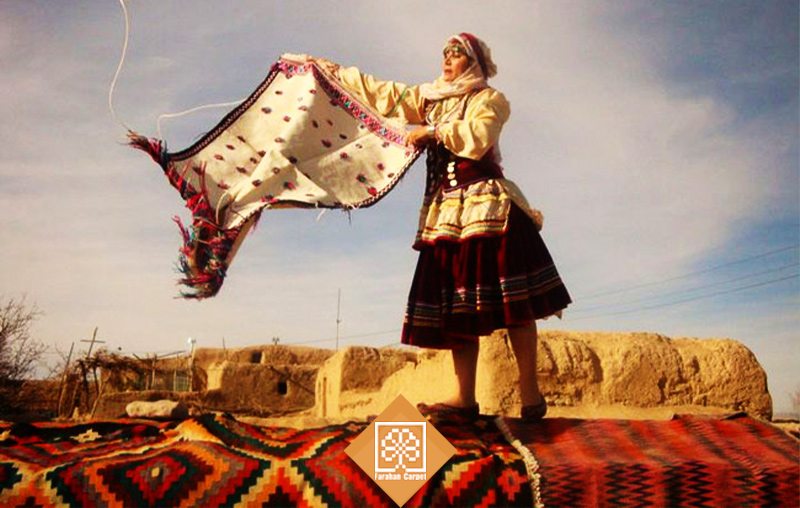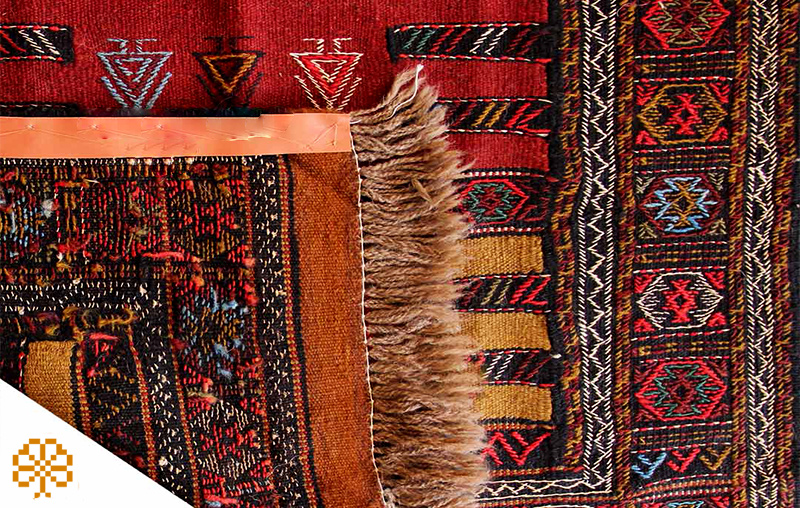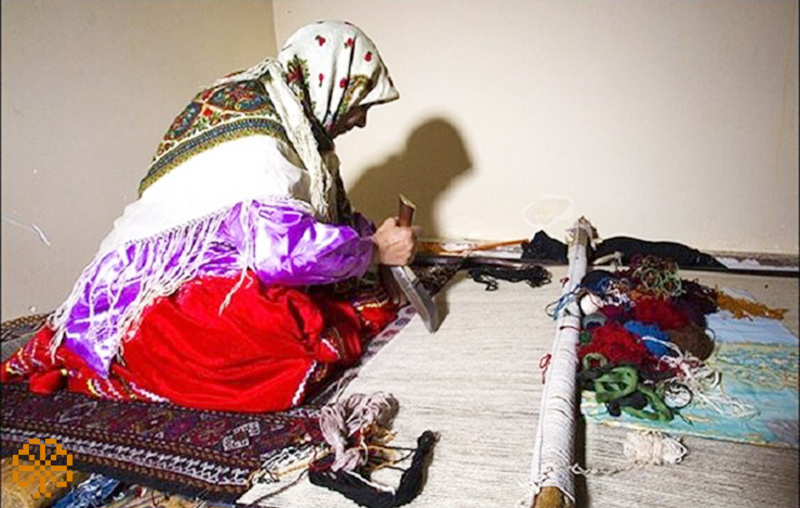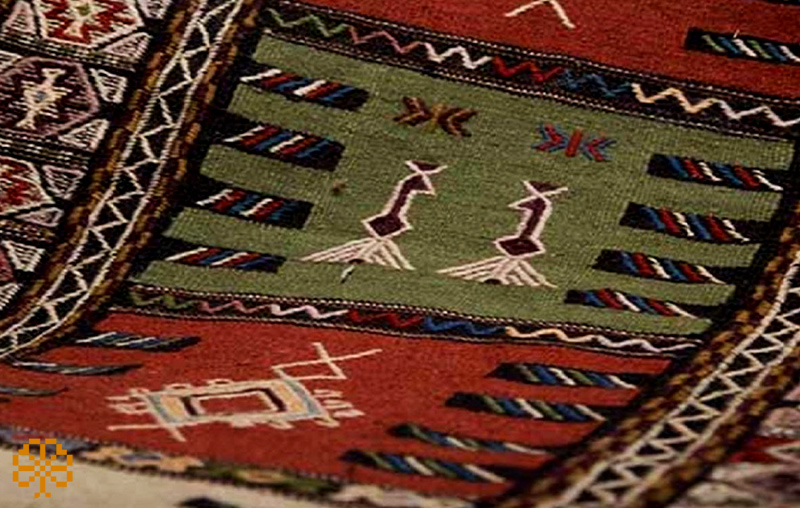Kurdish tablecloth kilim | Check specifications and prices

Kurdish tablecloth kilim is one of the artistic symbols of North Khorasan and Razavi provinces, which many of us may not have heard of, but it can definitely be introduced as one of the oldest and most sacred hand-woven fabrics of our Iranians. It has a high spiritual value on material and artistic value.
In this article, we will first try to tell you the history and brief introduction of Kurdish tablecloths from Farahan Carpet, and then we will examine the type of texture and its designs, and at the end, we will try to provide an accurate shopping guide and price. Let us tell you that if you are going to buy it; You can make the right decision.
What is a Kurdish tablecloth?
Many of us have the impression that the Kurdish people of Iran live only in western cities (Kurdistan, Kermanshah, etc.) while this is wrong. According to available statistics, between 500,000 and 1.5 million Iranian Kurds live in the North Khorasan region and parts of Razavi Khorasan that speak the Kurdish language of Kermanj, and this region is called the Kurdish region or Khorasan of Kurdistan.
Many Kurdish people in Khorasan Province live as nomads, and when we hear the names of nomads, we have to subconsciously imagine the texture of handmade carpets and kilims among them. Kurdish tablecloth kilim is one of the most important of these kilims, which has a very high reputation.
Kurdish nomadic women have long used sheep wool to create beautiful and colorful hand-woven carpets and kilims, among which a type of kilim was highly regarded for its impermeability to moisture and humidity, and for this reason. The nomads decided to use these kilims as a tablecloth to store bread, and after a while, this kilim and naming became known everywhere, and the Kurdish tablecloth kilim was introduced throughout Iran.
The recognition of the Kurdish table in North Khorasan did not stop here and it went so far that in 2012, at the meeting of the High Policy Council for the Registration of Historical and Intangible Heritage, this kilim was included in the list of national monuments and also in January 2013, it was awarded Became a symbol of UNESCO authenticity.
At present, the weaving and production of this kilim is done in Shirvan, Bojnourd, Quchan Farooj, Esfarayen and other Kurdish cities of Khorasan province. Meanwhile, the kitchen is introduced as the most active city in North Khorasan in the production of this handmade kilim.
The high value of the kilim tablecloth
After a while, the Kurdish tablecloth kilim became one of the holiest and most valuable handmade kilims in the Khorasan region, which had various reasons, some of which we will examine together:
First, this kilim was considered as a special art of unique weavings of Kurdish nomadic women of Khorasan, which was presented as an indescribable art that could be a symbol of their passion, taste and feeling towards nature and their ethnic and cultural history. Show.
Secondly, as we said, this kilim was used as a cover for storing bread, which also made this kilim known as a sacred carpet and weave among the people. Of course, it is necessary to point out that with the economic conditions and inflation that has occurred in our country, the use of these kilims as a tablecloth is no longer logical at all in terms of price, and now these kilims are used for underlays. .
The third case should be introduced in the role and designs of Kurdish tablecloths used. The patterns woven in this kilim show the greatness of culture, art, beliefs, customs, and the ups and downs of the Kurdish ethnic history of this land. The symbols used in this kilim all express ethnic dignity and respect for nature. Kurdish tablecloths and motifs are in fact ancient maps that are unique in their kind and we will become more familiar with them in the following.
Read more: Carpet weaving hygiene and safety tips to avoid dangers
You made tablecloth designs
As we mentioned, the motifs and symbols used in the Kurdish tablecloth are mostly symbols of the Kurdish way of life, livelihood and social and cultural system of this land, and by looking at it, you can get an overview of the nomadic life of this region. See.
In more than 90% of Kurdish tablecloths, you should expect at least one of the following designs, each of which has a specific symbol and address, and their use has special meanings.
1. The design of a little or the bride’s finger
If you look closely at the various pictures we have of tablecloths for you, you will see wide lines or fingers on the longitudinal sides that extend into the center of the rug. The use of these lines has many interpretations and concepts in nomadic culture.
Some weavers see the use of these lines as a symbol of Kurdish unity, while others see them as a symbol of the hands of guests sitting at a table inside a party. Others consider it a symbol of the hands of family members who have gathered at the table to eat after a lot of effort and activity.
But one thing that can definitely be mentioned is that the lines are definitely a symbol of hand and finger. In terms of illustrated culture, these lines are traditional symbols of fingers raised to the sky, which are considered to be praying and transmitting spiritual power.
2. Tree of Life Design
Another design that can be seen in many Kurdish tablecloth kilims is peacocks standing next to the tree of life. The use of the tree of life design is seen in many motifs of ancient Iranian hand-woven carpets and rugs and Mesopotamian civilizations, which in a way indicates the sanctity of the hand-woven.
The use of the tree of life in addition to the peacock with designs such as guard animals such as the lion slab is also seen in many maps, which in a way indicates the protection of these animals from the tree of life. The use of square and rectangular designs along with the tree of life is another of the most common designs of Kurdish tablecloths.
3. Motifs of animals and humans
In the weaving of kilims, unlike handmade carpets, which are basically done with pre-designed designs, in many cases it is done based on the inspiration of nature and the daily life of weavers. If you want to know the other differences between carpets and kilims, click here)
Kurdish tablecloth kilim is no exception to this rule and in many of their designs and designs you can see that Kurdish nomadic women are inspired by nature around them such as flower bushes, rivers, sun, mountains and also objects around them such as samovars. , Sugar breakers, mirrors, combs, dolls, pliers and everyday life items weave kilims.
The use of imagination and the lack of a pre-determined design has created a variety and different designs in Kurdish tablecloths, and this has made it impossible for you to see any of these two types of kilims that are very similar. .
Guide to buying a tablecloth
Many of you may be looking to buy a tablecloth kilim and you have been asked if these kilims are worth buying or not? To answer this question, we first go to the texture of these kilims:
The texture of Kurdish tablecloths is very special due to the use of horizontal rugs and unique torsion texture. Unlike many kilims, these kilims are woven using two wefts. One weft is used as the ground weft and the second weft is used to create patterns and colors, and this is why these kilims have rich patterns and meaningful drawings that increase their purchase value.
The next item is the colors used in these kilims, which are mainly warm colors for their texture, and if you are looking for a handful of love, life and hope for the future, Kurdish tablecloth kilim is one of the best options to buy. You are.
Kurdish tablecloths are considered as delicate and colorful kilims that are very suitable for use in home decoration and its price, depending on its dimensions and elegance, starts from 1.5 million Tomans to more than 20 million Tomans.
In this article, we have tried to review all the necessary points about how to weave, designs and drawings, as well as the purchase of Kurdish tablecloths, but if you have any questions or ambiguities about what has been said, you can do so. Share with us in the comments section.





